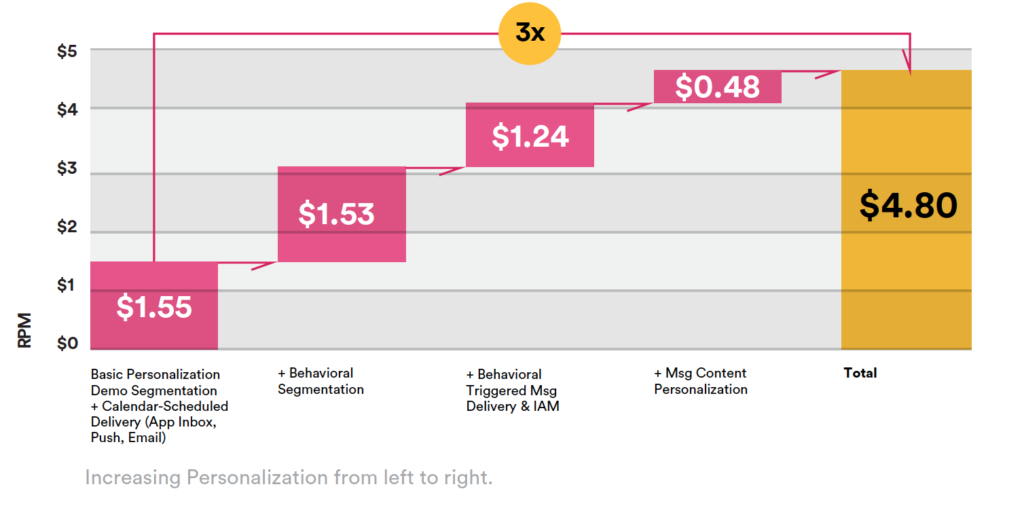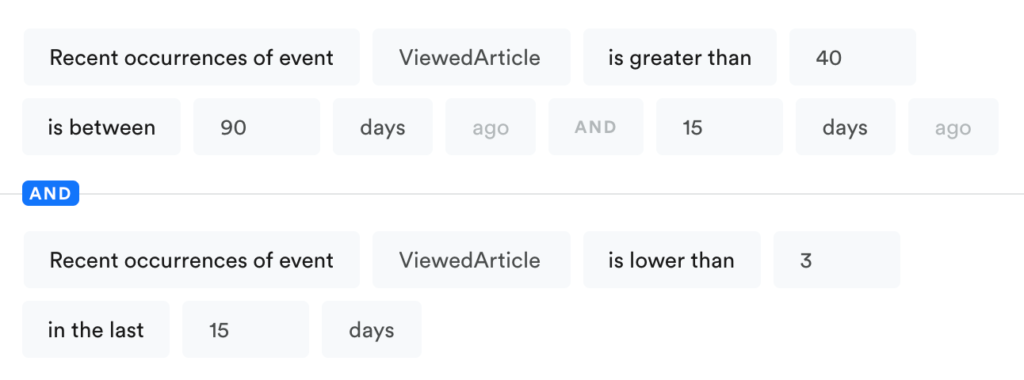I have the good fortune of working with many of the world’s largest and most successful gaming studios. And in the time since the webinar I did with Jayne Peressini, I have been pleasantly surprised to see how many of them are beginning to adopt many of the principles we discussed. In particular, forward-thinking organizations are evolving from the “throw it over the wall” mentality of user acquisition towards a blended marketing approach that combines user acquisition, onboarding, monetization and retention.
As we discussed in the webinar, the trend towards greater user privacy is making user acquisition more expensive and less reliable. That doesn’t mean organizations should discontinue user acquisition activities, of course. But it does mean that once you’ve acquired a customer, there must be a greater emphasis on realizing a return on the acquisition costs and on retaining the customer for as long as possible.
As we all know, the key to customer monetization and retention is in creating delightful and worthwhile experiences, in whatever form that might take in your business. Simply put, treat the customer well and you will be rewarded with her business and she might tell a bunch of her friends … which in turn can help with those user acquisition challenges.
Nowhere is this more clearly evident than in the Data Science Report our internal analysis team produced last year. In this report, which spans 1,800 campaigns and 670 million messages of actual customer results, the benefits of applying user behaviors and personalized messaging is clear:

A good example of behavioral-based user retention was discussed in our recent webinar with Andre Cohen at Titling Point. Andre explained that users don’t tend to suddenly cease use of an app. Instead, usage slows down, until eventually stopping altogether. Identifying and acting upon the early stages of a user’s declining usage can be vital to retaining that user.
But that’s easier said than done, since most engagement platforms lack the advanced segmentation capabilities needed to identify the declining usage scenario. For instance, let’s take almost any subscription-based app or free-to-play mobile game, where routine usage of the app is a direct measure of the value the user is receiving. Detecting declining usage requires a segment definition that spans (at least) two time frames – one that captures a baseline for app usage and a more recent one that identifies a consequence reduction from the baseline. In Leanplum, that segment definition might look like this:

In this example, we’re identifying users that were reading articles on a frequent basis dating back three months ago, but in the most recent two weeks have shown a significant reduction in usage. In other words, done correctly, behavioral-based segmentation can infer a user’s state of mind, which in turn can fuel personalized interactions that steer user sentiment in the right direction.
The overarching point here is that, as marketers, we must rely on and act upon data. And since data is being taken away from our user acquisition activities, it’s easy to understand why many marketers are leaning more heavily on user engagement and retention solutions that have strong data foundations and personalization capabilities.
Want to learn more about what Leanplum can do for your team? Check out these resources:
- For a quick overview, watch our 2-minute Gaming video
- We are the only engagement platform with a focus on Gaming
- Watch the full webinar with MobilityWare, LiveOps on a Shoestring Budget, where we discuss the inner workings of how they use Leanplum for live events
- Explore our Games Data Science Report to see how specific engagement strategies impact retention and revenue
- Read our article on Mobile Gaming 2021: How to Increase Player Engagement and Revenue for more insights on boosting overall engagement and monetization in mobile gaming
- Check out the Product Tour to see Leanplum in action
- Set up a complimentary personalized demo of Leanplum
—
For app-first companies, Leanplum is the only solution that helps personalize and optimize all customer touchpoints, both inside and outside the app. Leanplum combines multi-channel Lifecycle Marketing with the ability to A/B test the Product Experience for complete, end-to-end personalization of the mobile journey. Break down organizational silos and eliminate point solutions to enable rapid growth.




